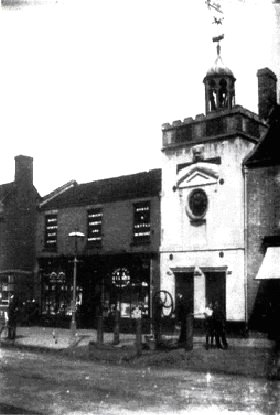
The Town Pump
With just over 400 people in the 17th century Watton was a small market town compared to the nearby market towns of Hingham and Swaffham. Judging by the fine houses still to be seen in the centre of both these places; it would appear that they had more prosperous families than Watton at this time. Besides the woollen industry at this period, Watton was also a celebrated "Butter Mart", great quantities of which were sent from the town to Downham Bridge, from whence the factors forwarded it to London by Water. On Saturday, April 25th 1674, a fire of terrible extent occurred in the town. Over sixty houses, the Butchers Shambles and other property were burnt down, the value of the destroyed property being estimated at £7,450, in addition to which goods to the value of £2,660 were consumed in the fire. A brief was granted the town to gather over all England until September 20th 1675. There was a good response to the appeal and rebuilding started quickly and in 1681 Thomas Baskerville visited Watton and described it as a small town, lately burnt, but now rebuilt, in which there is little remarkable save a fine new bowling green at the "George", where we dined. From the 16th century five annual fairs were held, on July 10th, October 11th and November 8th for cattle, on the first Wednesday of July for "stock" and on the second Wednesday of October for Sheep. The bottom part of the tower was once a "Lock-up" and has two strong studded doors. The clock was given a new luminous face in 1935 to commemorate the Silver Jubilee of King George V and Queen Mary. |

